Insights
7.10.2025
Miikka Kataja
What are the top 13 Lattice competitors and alternatives in 2026?
Discover the best Lattice competitors and alternatives for 2026.
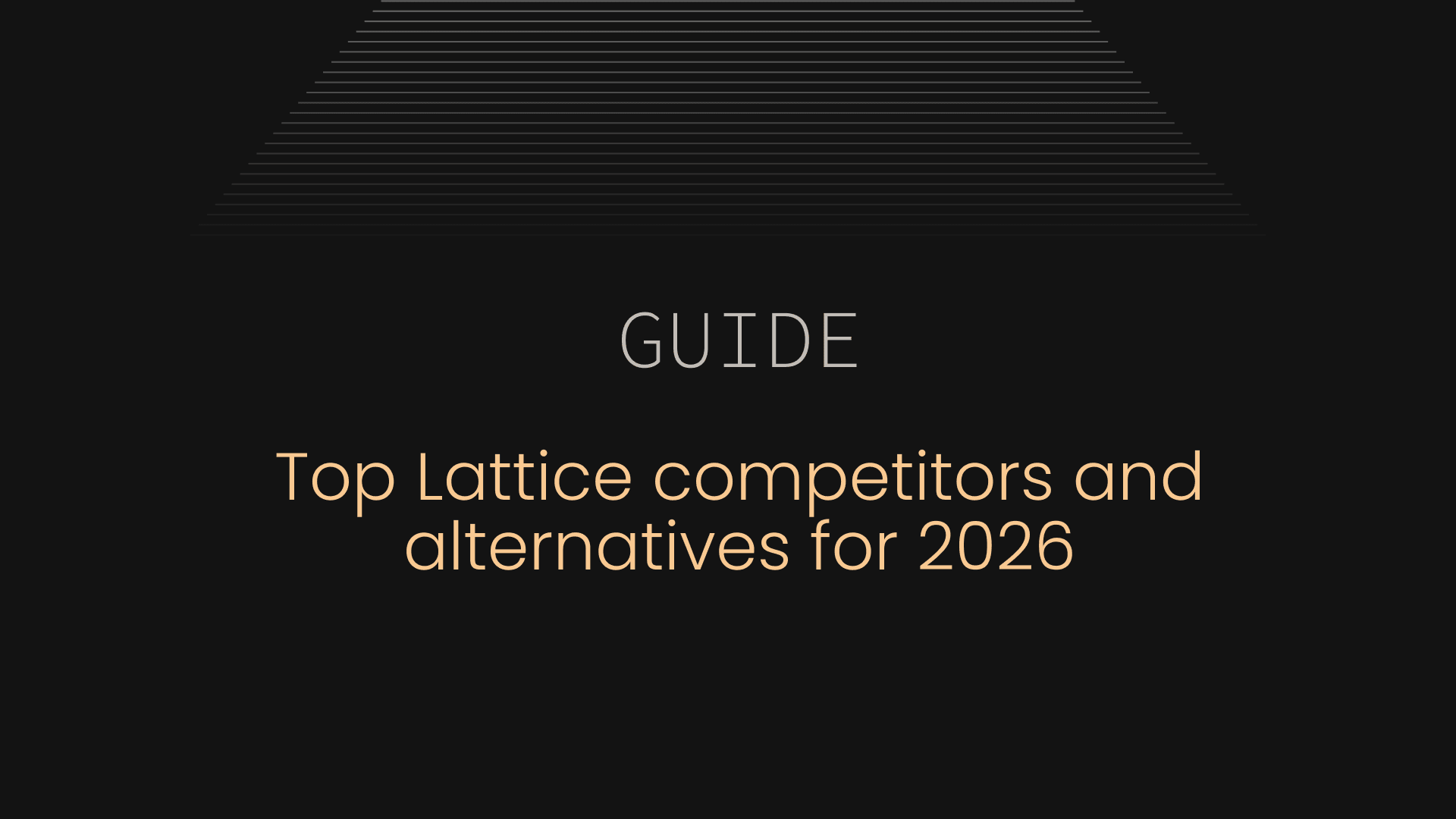
What are the top 13 Lattice competitors and alternatives in 2026?
Performance management and employee enablement platforms have evolved rapidly in recent years. While Lattice remains one of the best-known names in the space, many growing companies are now exploring more flexible, AI-powered alternatives that reduce manual admin and focus on real-time performance enablement.
In this guide, we break down the top 13 Lattice competitors and alternatives for 2026 — including newer solutions like Taito.ai, which bring automation and AI to the center of modern performance practices.
What is Lattice?
Lattice is a popular people management platform designed to help organizations manage performance reviews, goal tracking, engagement surveys, and career growth. It’s widely used by HR and People teams in mid-sized and enterprise organizations that need structured performance cycles and integrated engagement insights.
The platform is known for its breadth of features, but also its reliance on manual configuration and process-heavy workflows. Lattice helps centralize HR programs effectively, but it can feel complex for teams seeking fast setup and lightweight automation.
Why consider Lattice competitors?
While Lattice continues to be a leader in HR tech, many organizations are now prioritizing AI-driven, continuous performance enablement over traditional review cycles.
Some common reasons companies look for alternatives include:
- Desire for lighter, faster onboarding and simpler workflows
- Need for AI-powered insights that support managers and employees in real time
- Cost and scalability — Lattice’s enterprise-oriented pricing can become heavy as teams grow
- Preference for tools built around continuous feedback, 1:1s, and personalized coaching rather than review cycles alone
As noted in Gartner’s 2025 predictions by Unleash, AI could become the foundation of performance management through the automation of performance workflows.
McKinsey’s HR Monitor 2025 shows that high-performing organizations are already using automation and generative AI to reduce manual HR workloads — for example, cutting HR-to-employee ratios dramatically.
Quick decision matrix
| Tool | Best For | Key Strength |
|---|---|---|
| Taito.ai | Modern, fast-growing companies | AI-driven performance enablement (expectations, feedback, 1:1s) |
| Lattice | Enterprise HR teams | Comprehensive performance & engagement suite |
| CultureAmp | Engagement-focused organizations | Deep analytics and benchmark data |
| Leapsome | All-in-one people enablement | Strong OKR and feedback features |
| 15Five | Growth-oriented teams | Recognition, goals, and check-ins |
| HiBob | Mid-sized companies with core HR needs | Combines HRIS and engagement |
| Betterworks | Enterprise OKR management | Goal alignment and progress tracking |
| Peoplebox | Startups scaling fast | OKR and performance automation |
| Zavvy | Learning and feedback integration | Development journeys & automation |
| Mirro | Mid-market companies | Recognition and continuous feedback |
| Mesh.ai | AI-first engagement tool | Personalized insights and feedback loops |
| PerformYard | Professional services teams | Flexible review workflows |
| Engagedly | Culture-focused teams | Recognition, surveys, and gamification |
The top 13 Lattice competitors and alternatives in 2026
1. Taito.ai
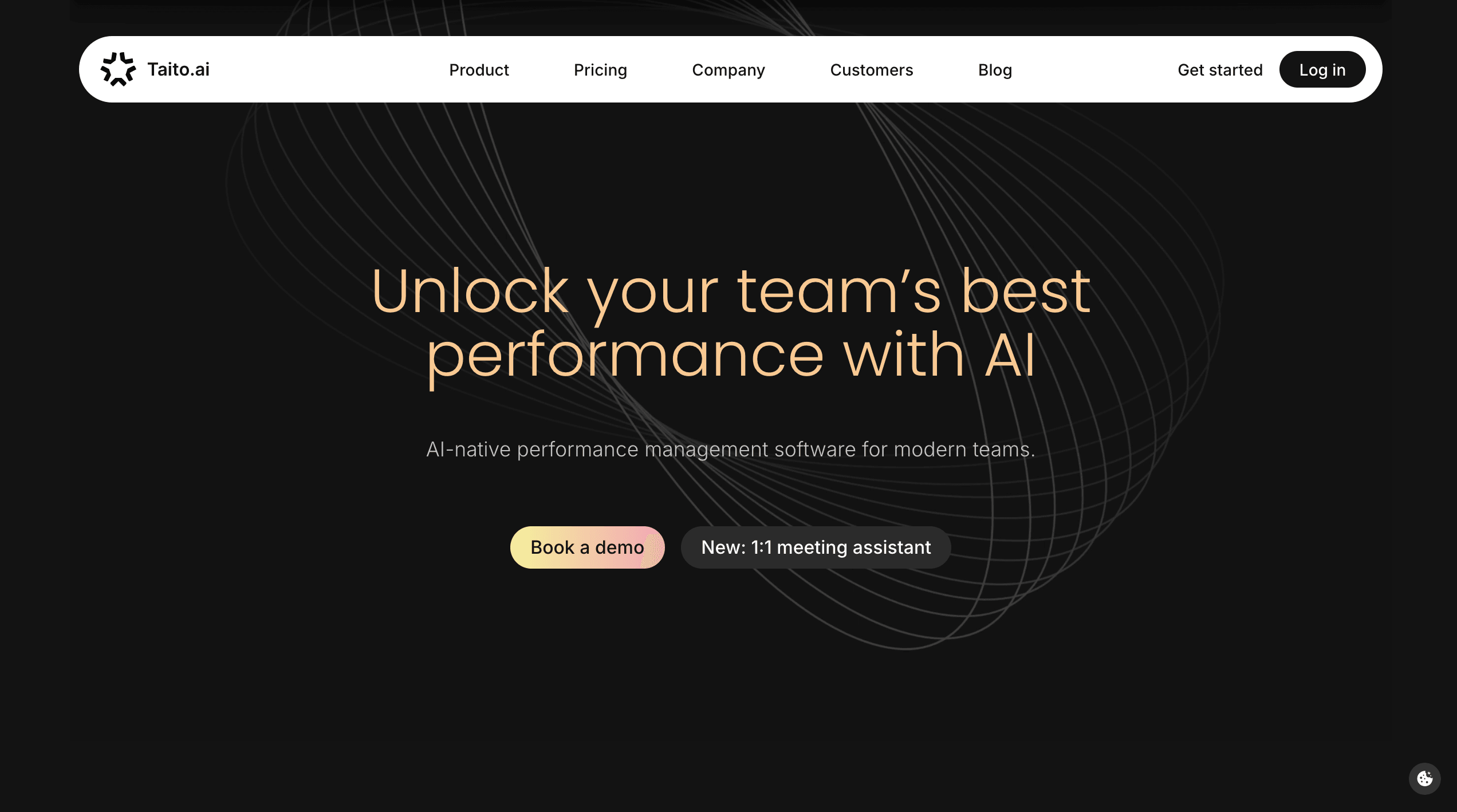
Overview: Taito.ai is an AI-native performance enablement platform that unifies expectations, continuous feedback, and coaching — automating much of the manual work found in traditional review cycles.
Strengths:
- AI-generated role and expectations frameworks
- Continuous feedback collection linked to personal goals
- 1:1 meeting assistance and coaching prompts for managers
Limitations:
- Newer ecosystem, still expanding integrations and analytics depth
Integration & Onboarding: Integrates with Slack, Google Workspace, and leading HRIS tools; fast onboarding within days.
Pricing Range: Mid-range and scalable from startups to enterprise.
Best For: Teams looking for an AI-first alternative that automates growth and performance discussions.
2. CultureAmp
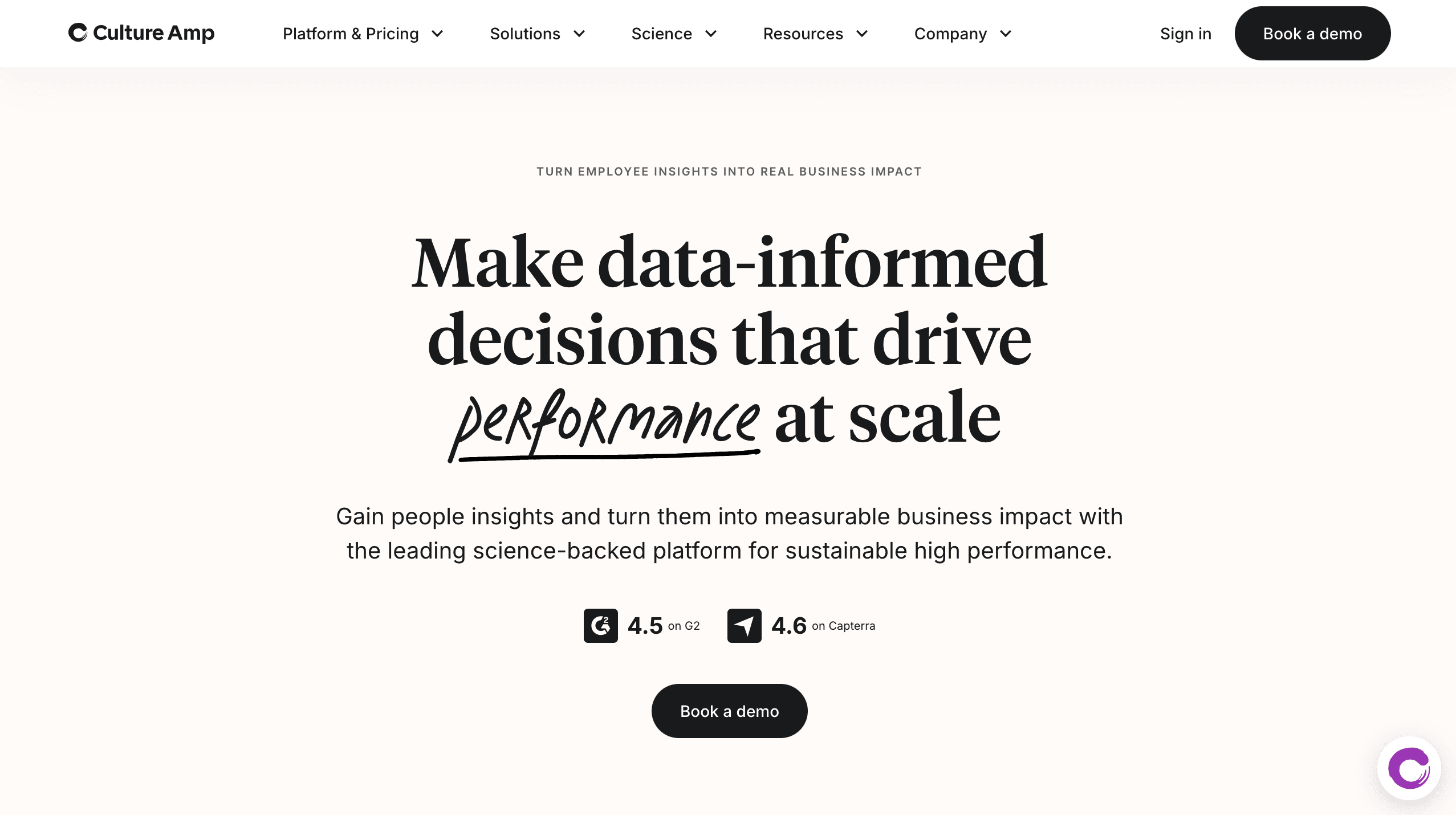
Overview: CultureAmp specializes in engagement surveys and performance management through analytics-driven insights.
Strengths:
- Industry-leading engagement data and benchmarks
- Robust reporting and culture insights
Limitations:
- Limited automation and AI-driven workflows
- Manual survey and feedback setup required
Integration & Onboarding: Integrates with most HRIS and communication tools; onboarding takes moderate setup time.
Pricing Range: Mid- to high-range, suited for mid-sized to enterprise organizations.
Best For: Companies focused on culture and engagement data.
3. Leapsome
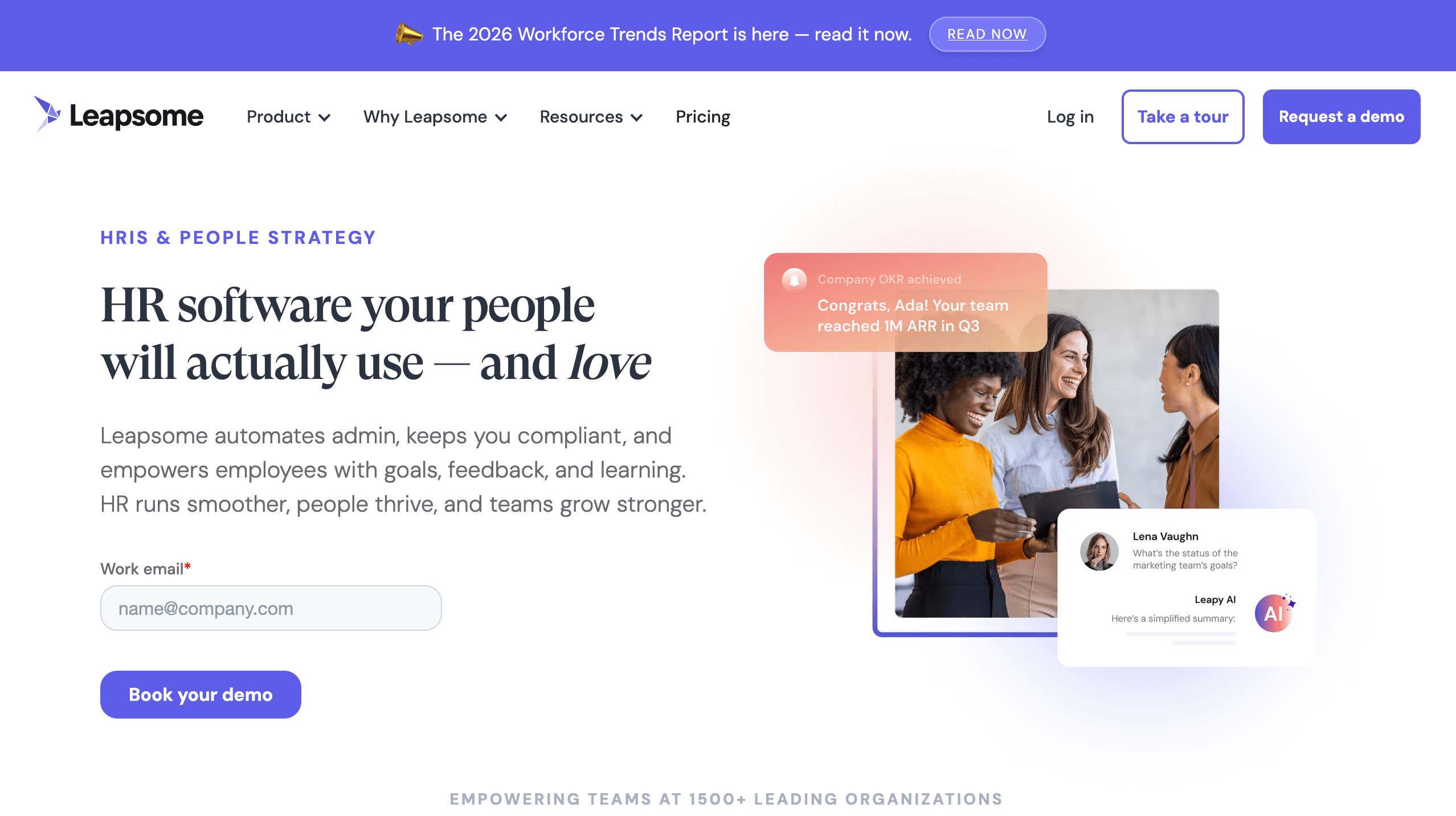
Overview: Leapsome combines OKRs, feedback, and learning in a unified people enablement platform.
Strengths:
- Strong goal-setting and competency frameworks
- Integrated learning modules
Limitations:
- Steeper learning curve for first-time users
- Setup and customization can be time-intensive
Integration & Onboarding: Works with Slack, Jira, and HRIS systems; onboarding requires admin setup.
Pricing Range: Mid-range, with per-user licensing for growing teams.
Best For: Organizations seeking structured OKRs and growth frameworks.
4. 15Five
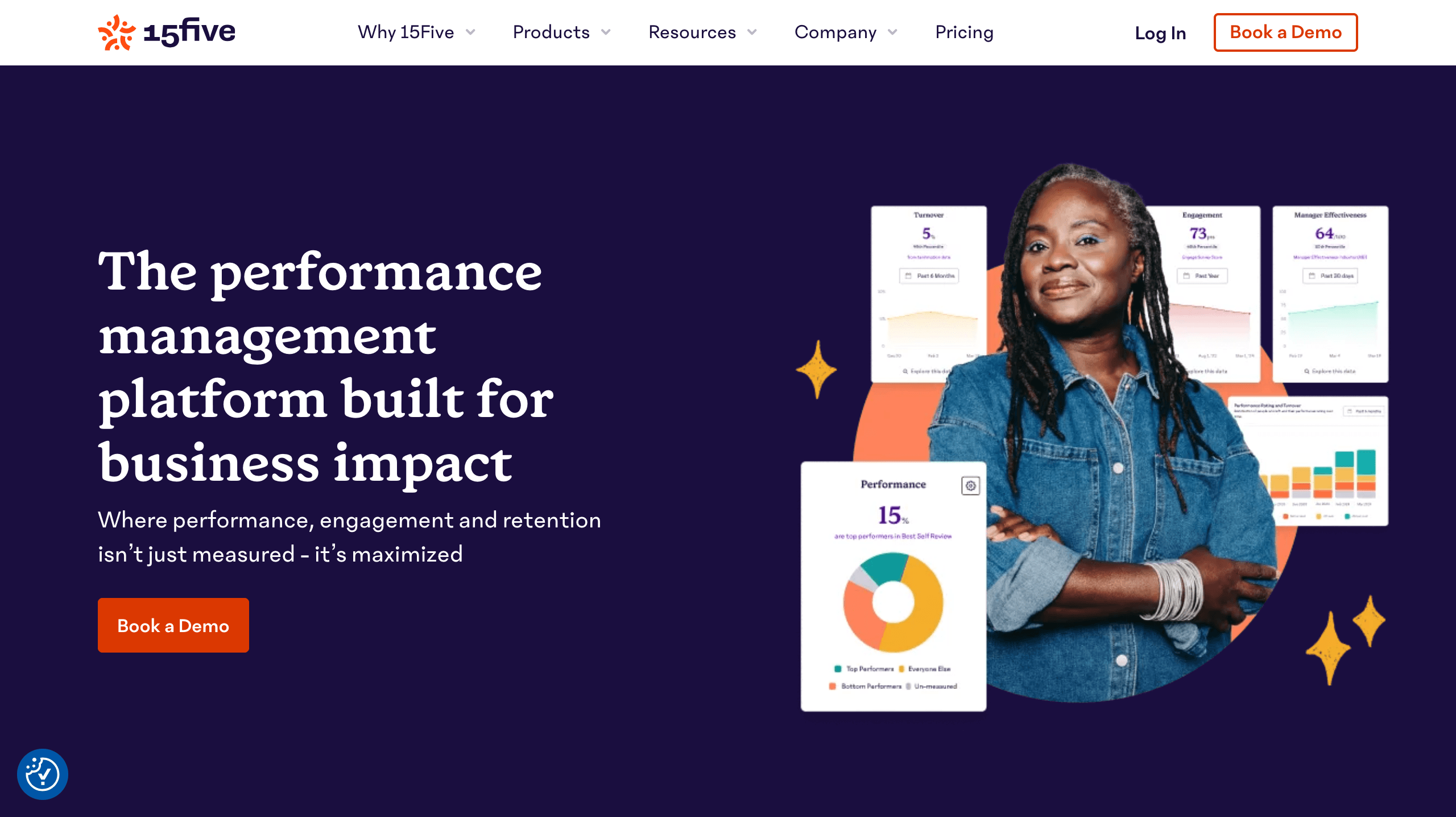
Overview: 15Five focuses on continuous performance, recognition, and engagement.
Strengths:
- Simple check-in system and lightweight reviews
- Great for remote and hybrid teams
Limitations:
- Limited analytics compared to larger platforms
- May lack advanced reporting for enterprise teams
Integration & Onboarding: Smooth onboarding and Slack integration; minimal setup required.
Pricing Range: Affordable for SMBs and growth-stage startups.
Best For: Companies seeking an easy-to-use check-in and recognition system.
5. HiBob
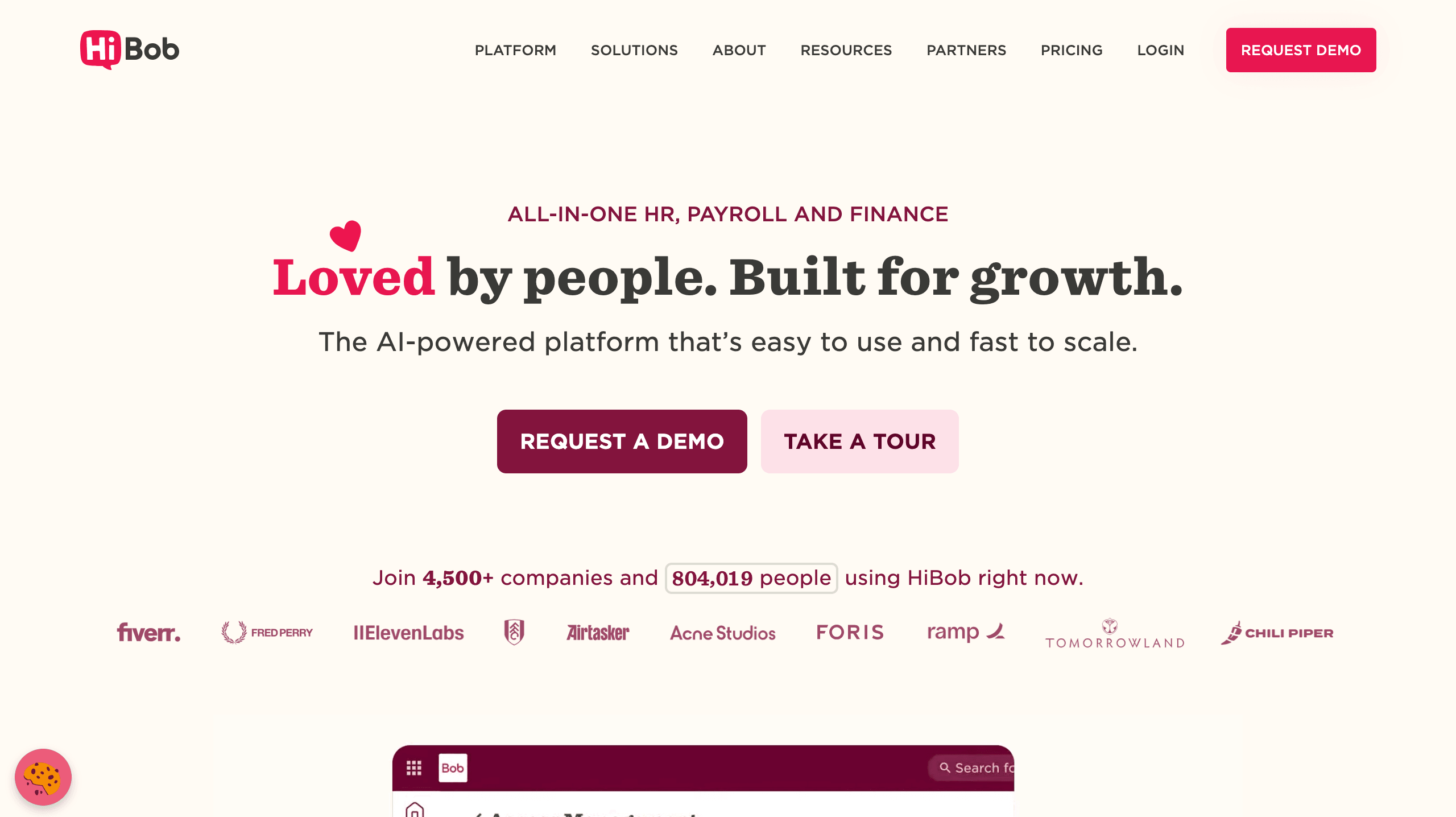
Overview: HiBob (“Bob”) is an HR platform combining people management, engagement, and culture tools.
Strengths:
- HRIS + performance capabilities
- Intuitive design and employee experience focus
Limitations:
- Performance module less comprehensive than specialized platforms
- Reporting can feel limited for large-scale use
Integration & Onboarding: Works with HR systems like Greenhouse and Deel; onboarding time moderate.
Pricing Range: Mid-range HRIS pricing tier.
Best For: HR teams seeking an all-in-one people platform.
6. Betterworks
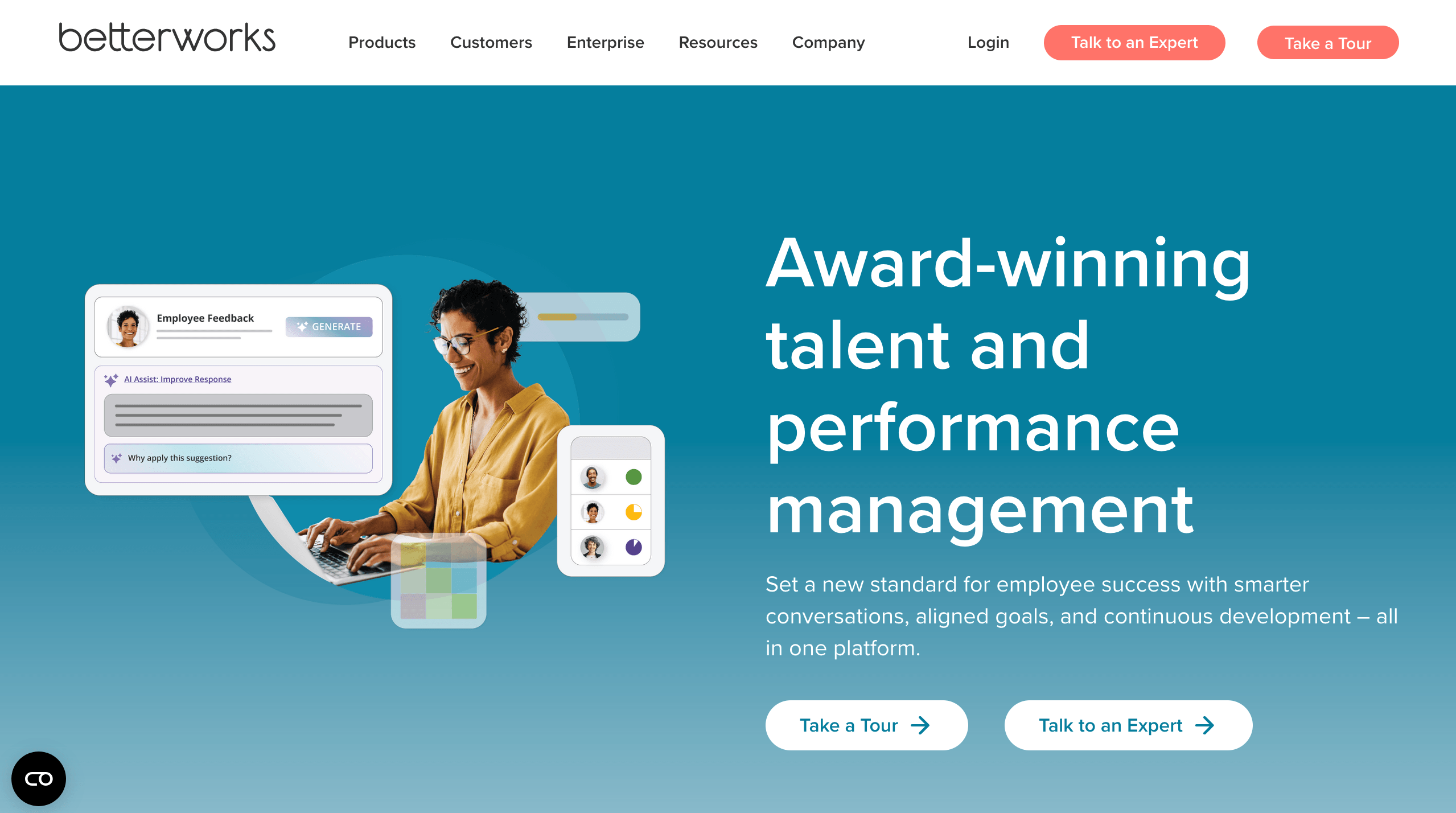
Overview: Enterprise-grade OKR and performance platform.
Strengths:
- Deep OKR alignment capabilities
- Enterprise security and scalability
Limitations:
- Complex for smaller organizations
- Implementation time can be lengthy
Integration & Onboarding: Integrates with MS Teams, Slack, and major HRIS; onboarding may take several weeks.
Pricing Range: Enterprise-level.
Best For: Large organizations driving strategic goal alignment.
7. Peoplebox
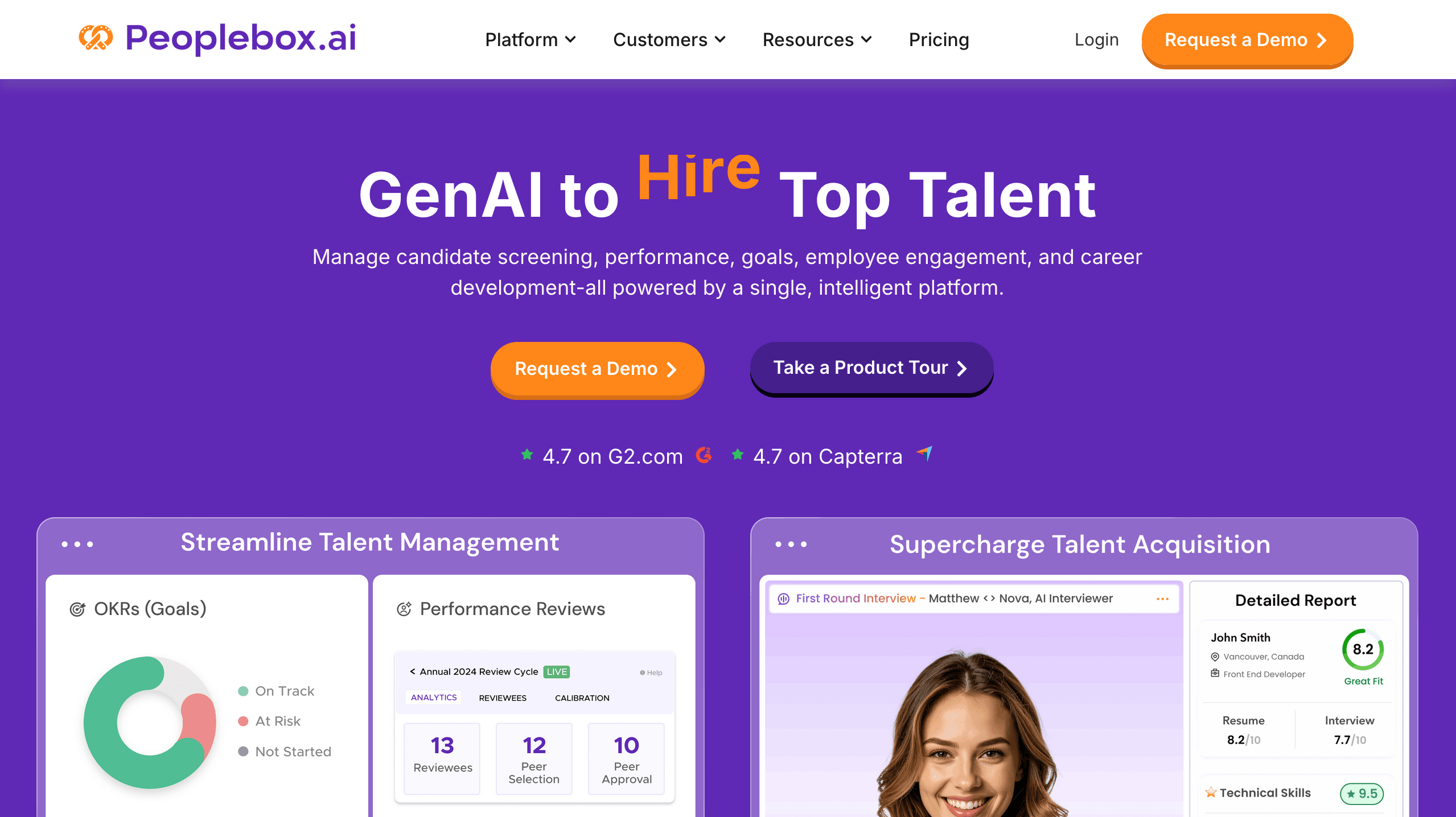
Overview: AI-assisted OKR and performance management tool built for startups and scaleups.
Strengths:
- Simple goal management and AI-driven insights
- Affordable and flexible
Limitations:
- Narrower feature set than larger HR platforms
- Limited analytics capabilities
Integration & Onboarding: Connects easily to Slack and Jira; setup in days, not weeks.
Pricing Range: Affordable, startup-friendly pricing.
Best For: Fast-growing startups scaling performance practices.
8. Zavvy
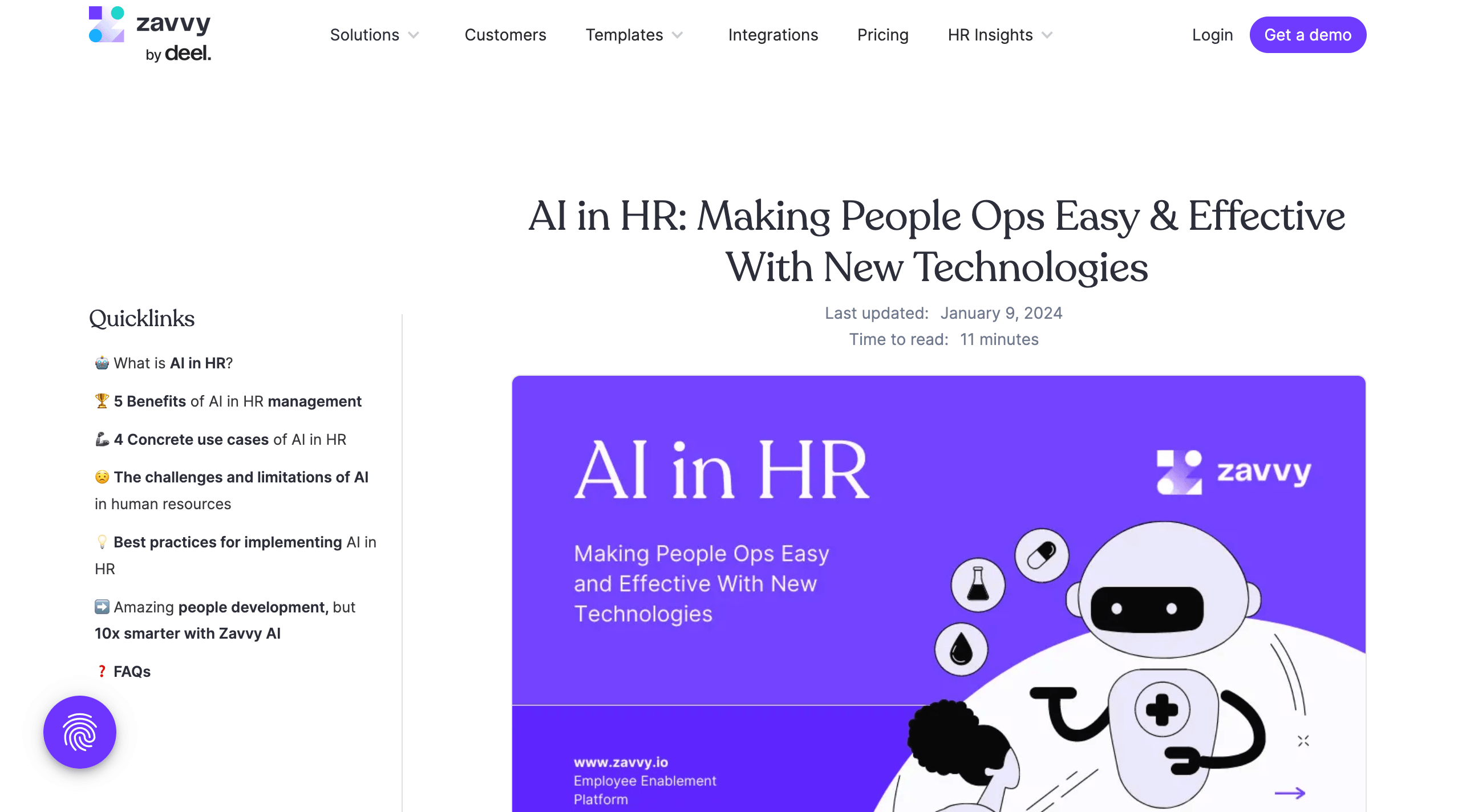
Overview: Combines performance management with learning and development journeys.
Strengths:
- Unique learning-based performance loops
- Automation for training and growth paths
Limitations:
- Smaller customer ecosystem
- Limited benchmarking analytics
Integration & Onboarding: Works with Google Workspace and Slack; guided onboarding flow.
Pricing Range: Mid-range, depending on modules activated.
Best For: Teams combining performance with continuous learning.
9. Mirro
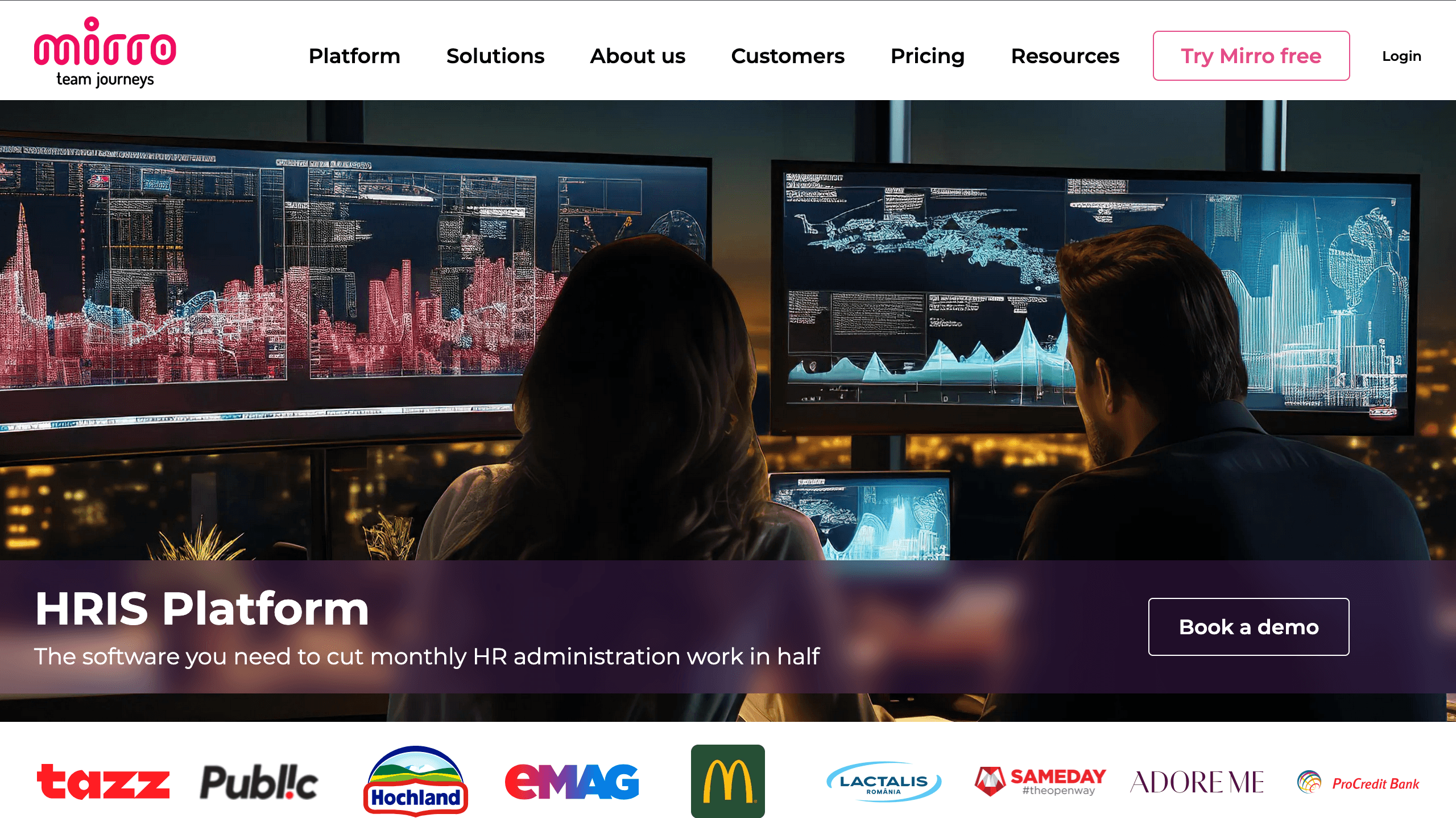
Overview: Mirro is a people enablement platform focused on recognition and feedback.
Strengths:
- Easy-to-use interface
- Encourages frequent recognition and engagement
Limitations:
- Lacks advanced OKR and evaluation tools
- Not ideal for complex review cycles
Integration & Onboarding: Quick cloud setup; integrates with Slack and Teams.
Pricing Range: Budget-friendly for small to mid-sized companies.
Best For: SMBs prioritizing culture and peer recognition.
10. Mesh.ai
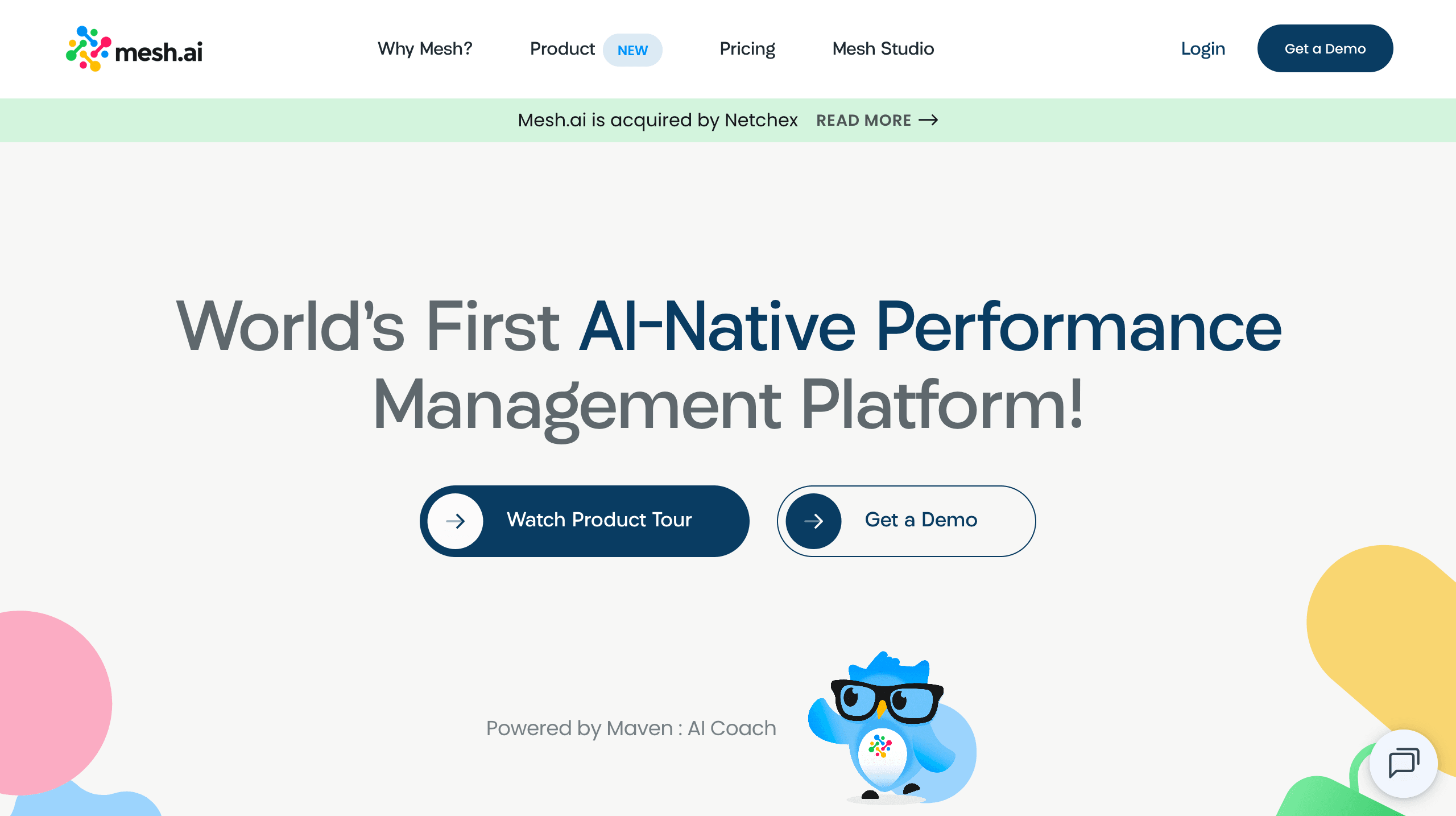
Overview: An AI-powered performance and engagement platform built for real-time insights.
Strengths:
- Personalized recommendations for employees and managers
- Feedback automation and insight generation
Limitations:
- Smaller ecosystem than larger competitors
- Fewer enterprise integrations
Integration & Onboarding: Easy setup via Slack and HRIS systems; quick implementation.
Pricing Range: Mid-range pricing tier.
Best For: Tech-driven companies prioritizing AI in HR processes.
11. PerformYard
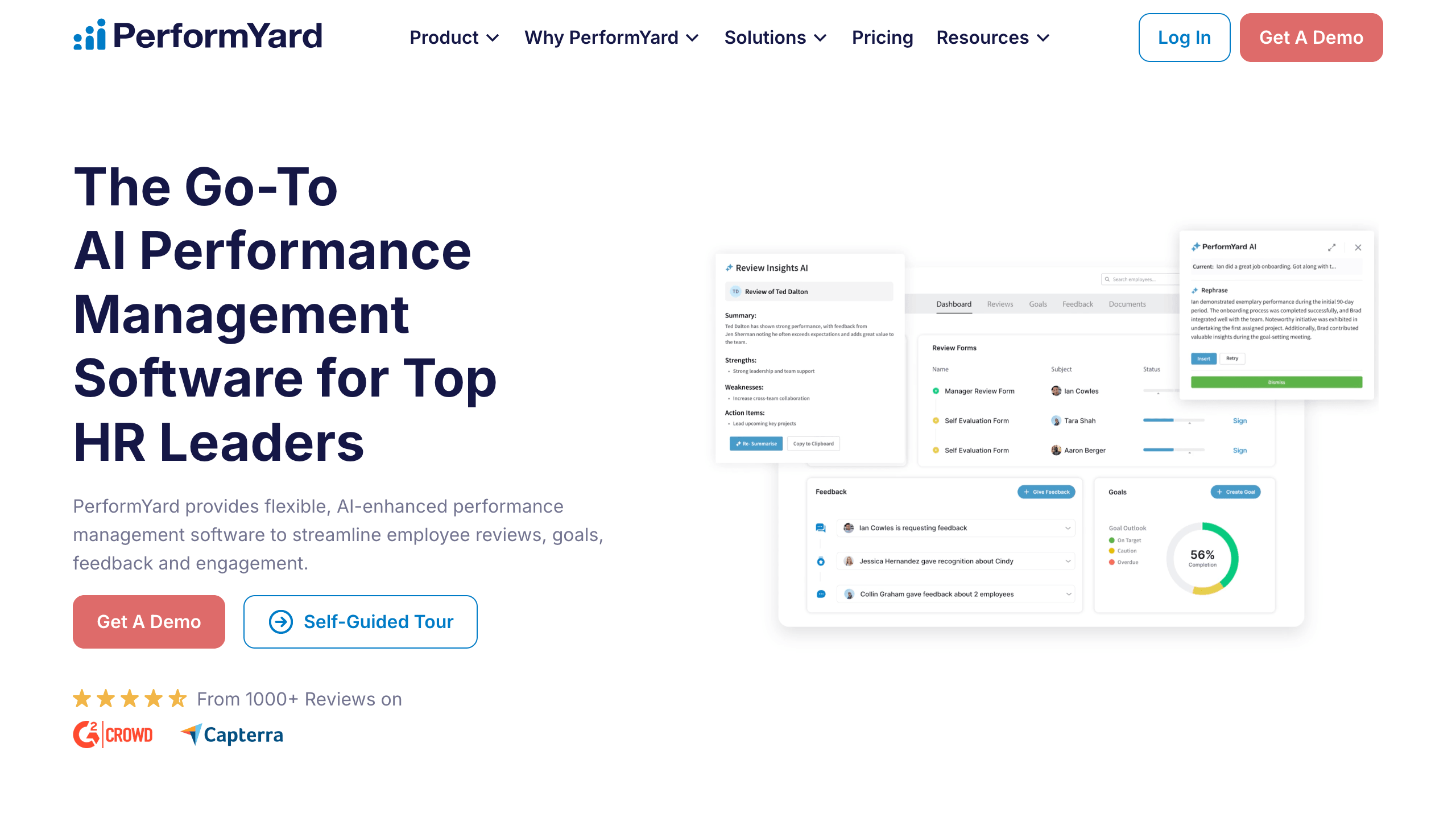
Overview: Customizable performance review software suited for professional services and mid-sized companies.
Strengths:
- Flexible review templates and cycles
- Easy reporting for HR teams
Limitations:
- No built-in feedback automation
- Lacks engagement tools
Integration & Onboarding: Integrates with core HR systems; guided onboarding process.
Pricing Range: Mid-range pricing.
Best For: Teams seeking configurable review cycles.
12. Engagedly
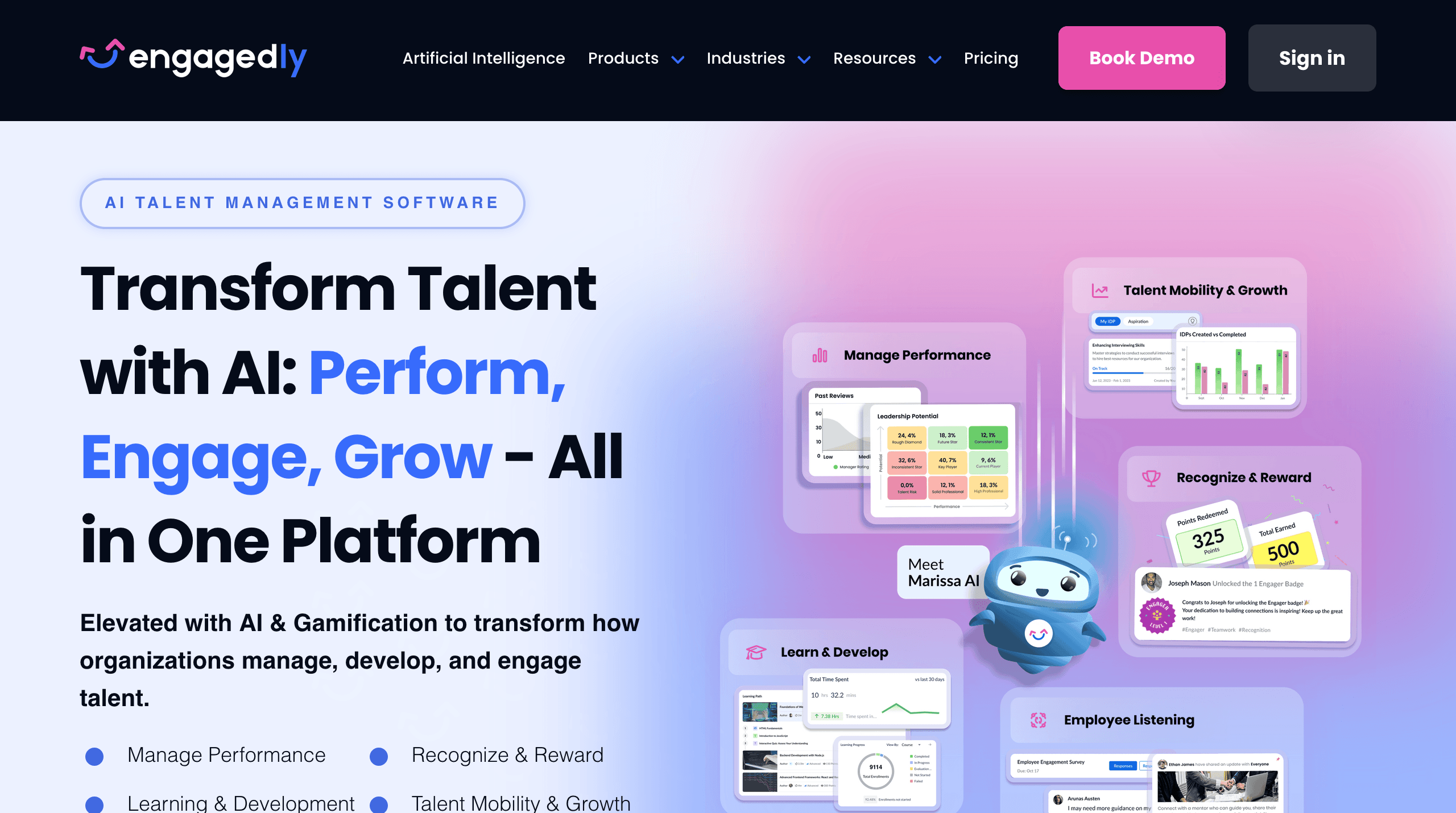
Overview: Comprehensive platform for engagement, recognition, and learning.
Strengths:
- Gamified features encourage participation
- Combines engagement and performance tools
Limitations:
- Interface can feel heavy for smaller teams
- Requires training to configure workflows
Integration & Onboarding: Connects with Teams, Slack, and learning tools; onboarding guided by customer success.
Pricing Range: Mid-range, suitable for mid-sized to large organizations.
Best For: Organizations emphasizing engagement and motivation.
13. Synergita
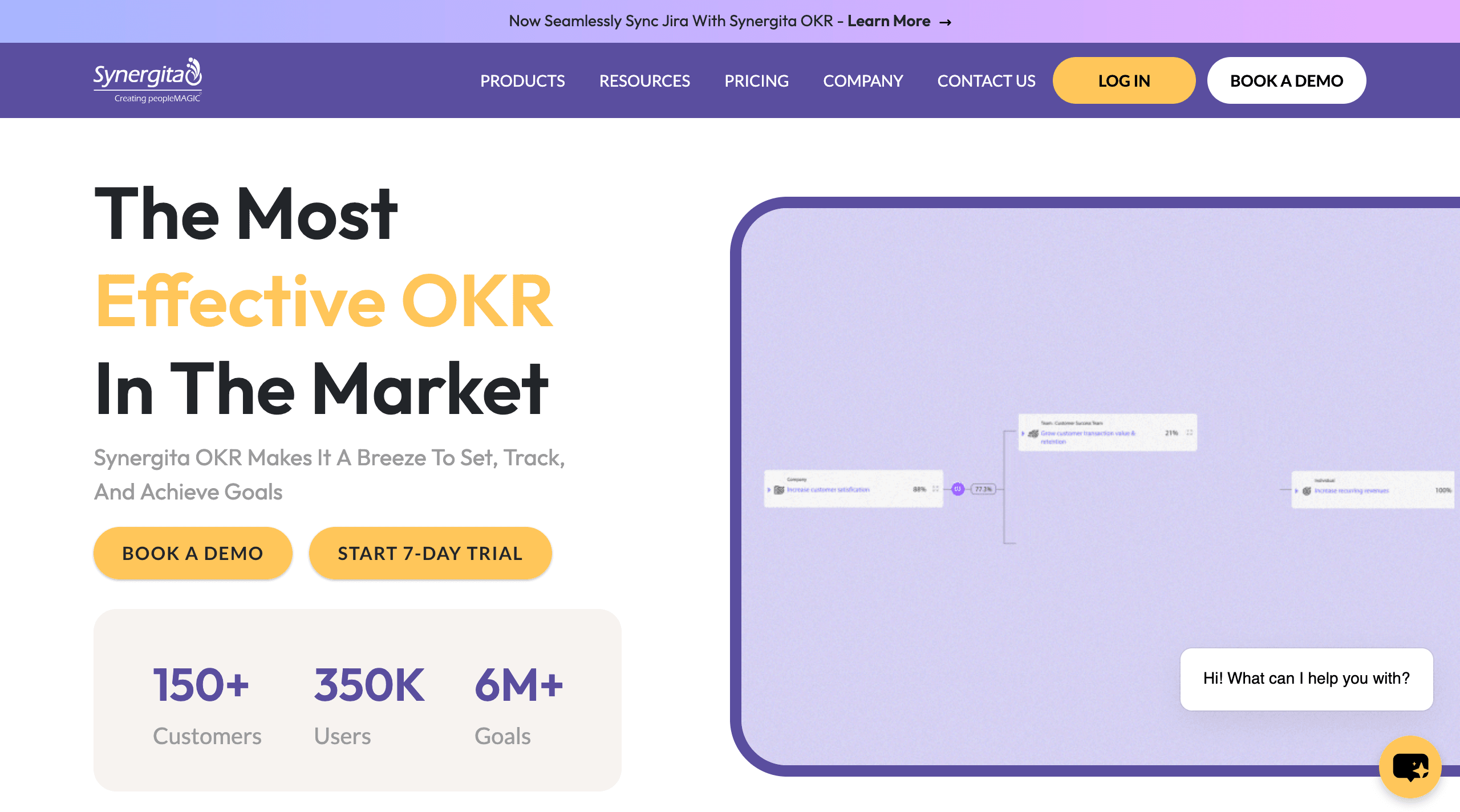
Overview: Cloud-based performance management platform with strong analytics.
Strengths:
- Goal tracking and competency frameworks
- Useful automation for performance appraisals
Limitations:
- UI less modern than newer tools
- Reporting flexibility can be limited
Integration & Onboarding: Standard HRIS integrations; moderate onboarding process.
Pricing Range: Affordable to mid-tier pricing.
Best For: Traditional HR teams upgrading to digital systems.
Recap: what is the best solution for us?
Choosing the right alternative depends on your company’s size, maturity, and the role performance management plays in your culture. Here’s a summary of the platforms that stand out in key categories:
- Best AI-native platform: Taito.ai
- Best for engagement insights: CultureAmp
- Best for structured OKRs: Leapsome
- Best for lightweight check-ins: 15Five
- Best for HR-suite integration: HiBob
- Best for large enterprises: Betterworks
Closing summary
The performance management landscape is shifting fast. Traditional review-heavy systems are giving way to continuous, AI-enabled performance enablement — where growth happens weekly, not yearly.
Whether your company is exploring automation, real-time feedback, or scalable performance practices, there’s now a wide range of tools to choose from.
Taito.ai stands out as the new-generation solution built for this shift — helping teams define clear expectations, collect meaningful feedback, and coach continuously with the help of AI.
FAQs
1. What’s the best alternative to Lattice for startups?
Taito.ai and Peoplebox offer lightweight, AI-supported systems ideal for fast-scaling startups.
2. Which alternatives focus on AI and automation?
Taito.ai and Mesh.ai lead in automation and intelligent feedback recommendations.
3. Which Lattice competitors are easiest to implement?
15Five, Mirro, and Taito.ai all offer fast setup with minimal admin.
4. What tools combine OKRs and feedback in one system?
Leapsome, Betterworks, and Taito.ai connect goals and continuous feedback seamlessly.
5. Which platforms fit hybrid or remote teams best?
15Five, CultureAmp, and Taito.ai all support distributed feedback and check-ins.